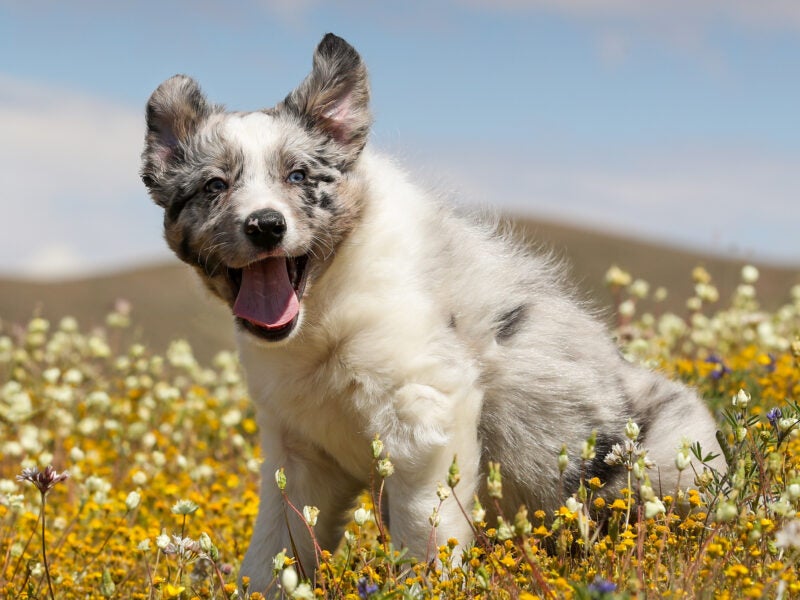
What better way to brighten the holidays than with fabulous photos of your adorable puppies and beautiful dogs? Good pictures will show your dogs to their best advantage on social media and to puppy buyers.
And of course, they make holiday cards that friends and family will treasure. Taking good photos of dogs is harder than it looks, but we have talked with two breeders who are professional photographers. They shared tips that will take your photos to another level.
Karen Moureaux of Contact Point Border Collies has always enjoyed photography but started photographing dogs and agility in 1989 when she got her first Border Collie.
“I have focused on dog photography and agility dogs since the early 1990’s. I’ve photographed several AKC Agility National Championships as well as local dog agility trials. Although my first love is agility, I’m happy to photograph all dogs performing in any sport. I love action photography!”
Beci Markijohn Beasley of Kymerite Cavaliers https://www.instagram.com/millys.on.missions.with.ramsay/ also has always loved photography but didn’t have dogs until she was an adult.
“It was a natural shift to take pictures of the living beings I adored most in my life. Within the past few years, I’ve dabbled in photographing dog sports such as dock diving, barn hunt, Fast CAT, and casual animal photography as well as taking photographs at conformation dog shows. But my favorite pictures to take are puppy pictures of my own litters.”
Getting dogs and puppies posed at their best angle
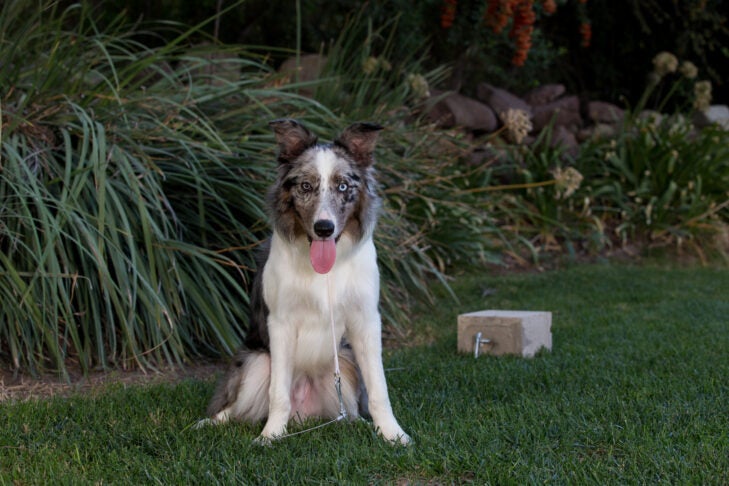
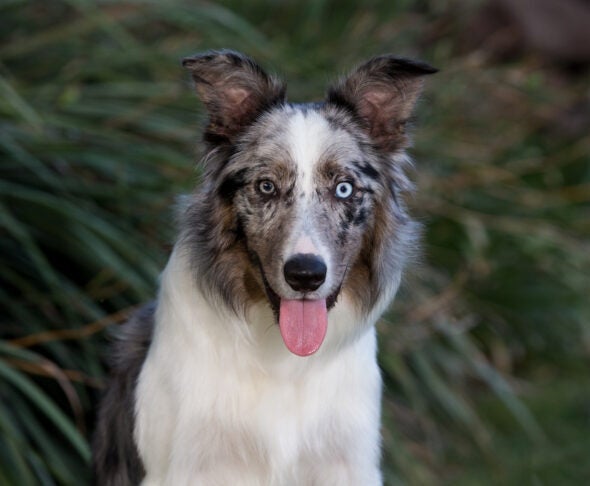
“The most important tip is to get level with the dog, which usually means getting on your knees or lying on the ground,” Karen said.
“If I have an adult dog that doesn’t have a stay, I will put a thin show lead on him and have the assistant hold it snugly so there isn’t any slack. That’s usually all it takes to get a dog to stay long enough to get a few photos.”
Nobody to help and your dog won’t stay? Karen has a cement block with an eye bolt in it, with a thin plastic-covered line attached. The show collar is clipped to this. “Using a show slip collar and lead in a color matched to the dog makes editing it out easier, with apps such as Lightroom, Photoshop or the iPhone app that I use called Retouch. The Retouch app is really easy and handy for removing leashes.”
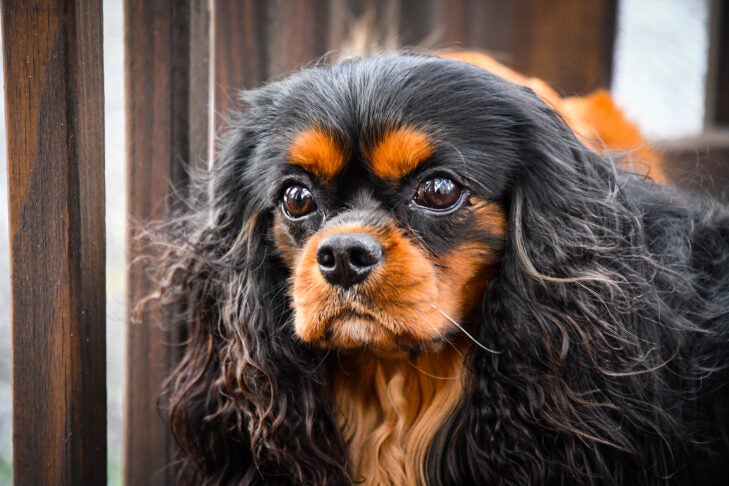
Beci advises that you do not always take the pictures when your dog is looking right at you. “Take some with him looking off past you or looking down a bit. Don’t be afraid to snap a picture when your dog is alert and looking at something. The off-the-cuff shots can be some of the best.”
It isn’t easy to be objective about your own work. “Have a friend or two look at the pictures you’ve taken without telling them which ones you like best. Ask which ones are their choice. The answers could make you look differently at a picture or two!” Beci said.
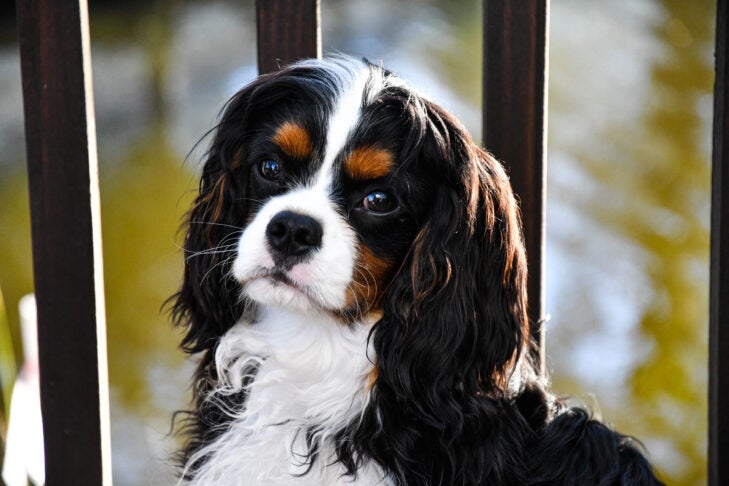
Putting the dogs in their best light
Taking photographs outdoors is not always an option, and “good lighting is a key to a nice photo,” Karen said. “Indoors, you can position the pups by a window that gets nice light.”
When photographing puppies, Karen usually has them on a table or platform so she can be at eye level with them without having to lie on the ground. An important safety note: “If you are going to use a platform, you will need an assistant who is quick and nimble to prevent a puppy from falling. Assistants make photographing all dogs and puppies much easier.”
“For puppies, use soft lighting, nothing harsh,” Beci said. “Remember, their eyes are brand new! You should NEVER use a flash with puppies. Constant light only. I use natural light with my blinds tilted up to bounce the sun off the ceiling if I am shooting in the morning when the light is shining directly into my whelping room window. You can also aim a floor lamp or flood light at the ceiling for indirect lighting.”
Before you start photographing,” Beci said, “Check the background as you frame your picture or set up your area to shoot. Outdoors, look beyond the immediate background. You don’t want a dumpster or your neighbor’s beater car in these pictures! Indoors, no clutter or distracting things like overflowing laundry baskets, packages of baby diapers, etc. behind your beautiful dog or puppies. Those pretty babies should be the only focus.”
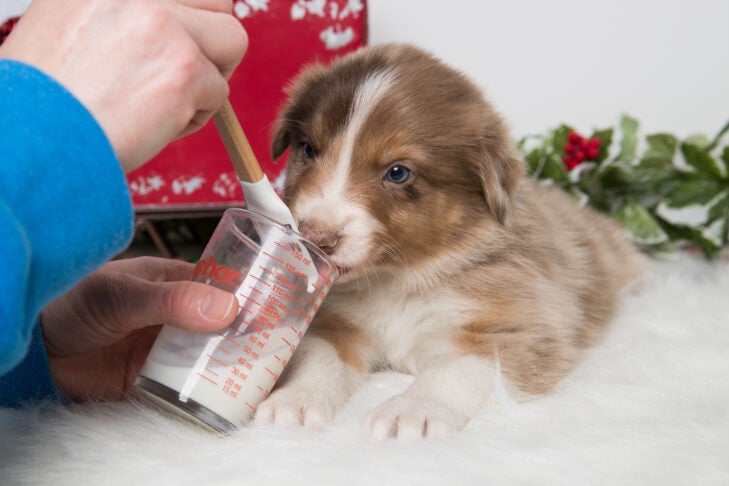
Karen “likes to use Savage brand seamless paper rolls for the background. It comes in many different colors, is affordable and photographs well.” This is a great way to be sure no unattractive distractions are in your photos.
Making the best use of a smart phone camera
Beci suggests:
- Use portrait mode when you can and be sure the focus is on your dog, not on the flooring, comforter, quilt, or background.
- As with any camera, make sure your dog isn’t backlit (in other words, make sure there is not light shining from behind your dog) unless that is a look you want for the picture because your dog will be shadowed.
- Wipe off the lens of your phone to be sure there aren’t any finger smudges, grease, or smears that will make it hard for your camera to find the right focus.
- Take the pictures at the highest possible resolution for the best-looking pictures (You should be able to change this in settings on your phone). You want all the pixels you can get!
- Tap the screen on the place you want the focus and exposure to be so it’s lighter or less bright, depending on your needs.
- Don’t use the “selfie” side of your camera. The lens is much grainier.
- Use a mobile phone holder and tripod if needed to help steady your phone.
- Physically move closer or farther away to get different cropping without loss of pixels. When you zoom in with your fingers on the screen, you lose some of the crispness in your picture. That being said, with dogs, sometimes you have to use the zoom feature, or they will move on you.
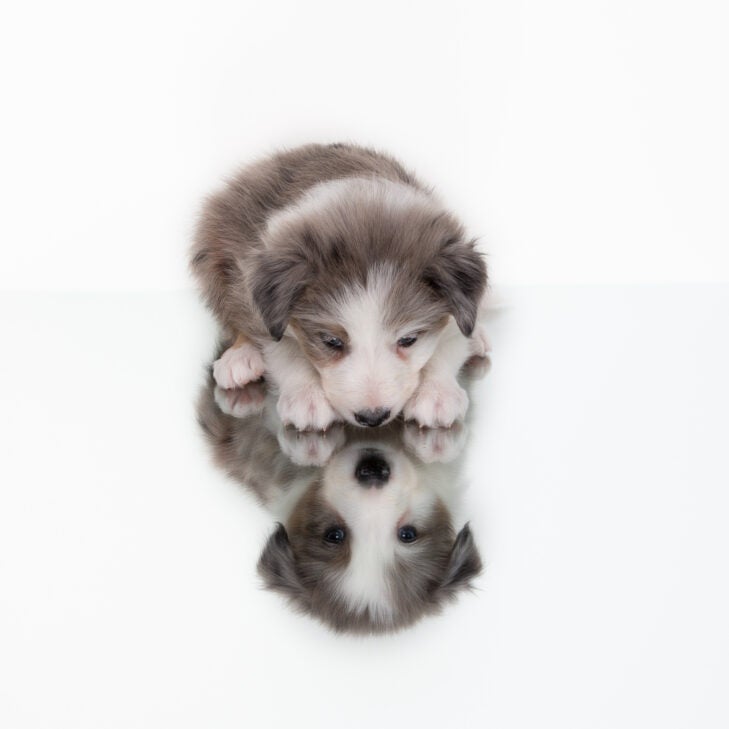
If you want to get a little more serious, what type of camera might be good to start with?
Beci suggests that good cameras are point-and-shoot with a telephoto lens so you can zoom in and out. Two good options:
Nikon Coolpix B600, $329.95 and has built-in Bluetooth and Wi-Fi capabilities.
Canon PowerShot SX540 HS, $279.99 with built-in Wi-Fi
Karen uses a Canon digital camera, but she said that “many of the more recent cell phones can capture very nice photos. No matter what you use, the most important thing to remember when trying to capture an engaging photograph is to be eye level with the puppy or dog and try to be fairly close up. The puppy or dog should fill the frame and not have a bunch of dead space around it. If you do that with any camera or cell phone you will be off to a good start in getting a nice photo of your puppy or dog.”
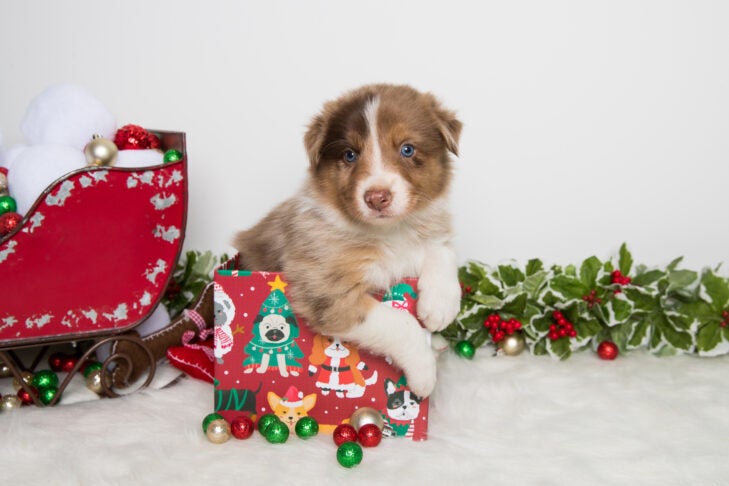
Other helpful tips:
- Karen uses a duck call lanyard necklace with about eight different noise making calls on it to get the older pup or dog’s attention and different expressions. The lanyard necklace and calls can be purchased through sporting goods stores.
- Karen uses goat milk or peanut butter on a spatula to bait young puppies for photos.
- “When taking headshots of puppies to assess them,” Beci said, “try to get the same front-facing angle for each one, even if it takes 100 shots.”
- For photos to be used on the internet: “Puppies, puppies, puppies,” Beci said. “No one can resist them. Always be sure to put really great puppy pictures on your website. Leave the random, poorly framed ones off. You can always have a page for new puppy families, but your website, FB page, and social media should be your BEST work! You want people to see how lovely your puppies and breeding dogs are.”
- “You don’t have to have the highest resolution if you’re only using the pictures on the internet, but for print ads, get the highest resolution you can,” Beci said.
- Beci stresses that when using pictures someone else has taken, “be sure to get their permission and know their requirements for sharing, usage in ads, etc. You do not want to upset someone who took gorgeous pictures of your dog(s) because you might come across them again in the future.”

